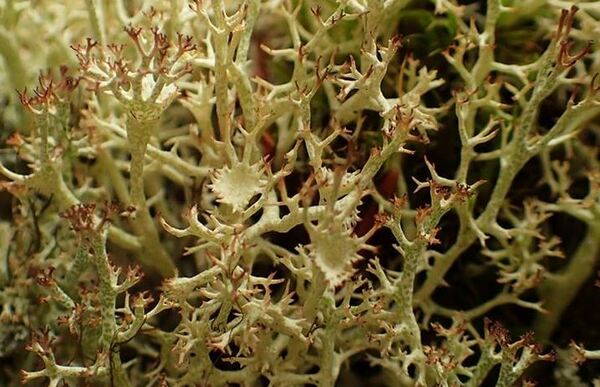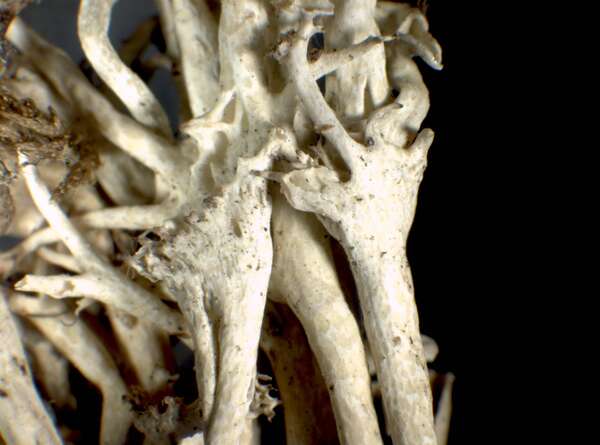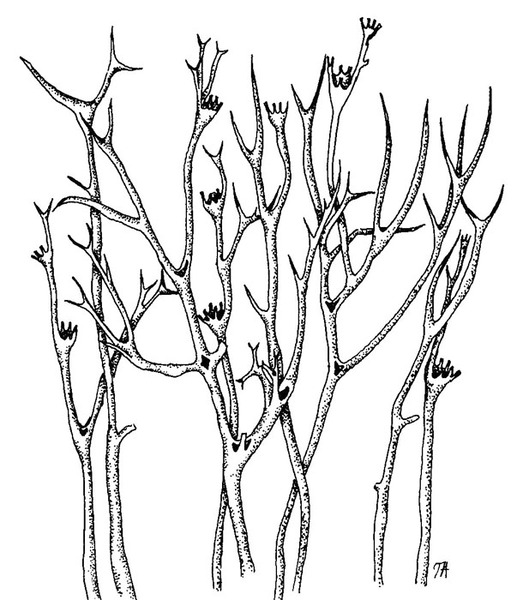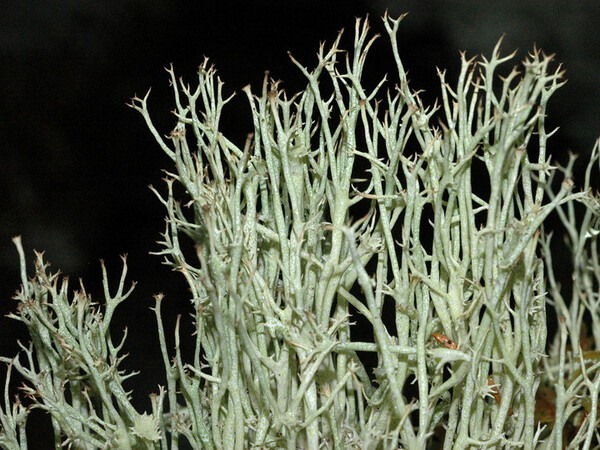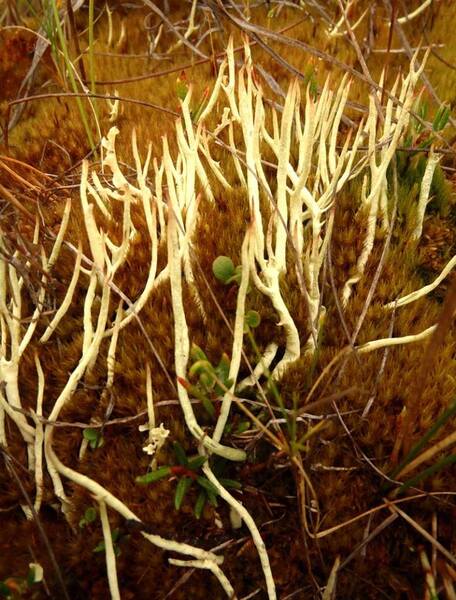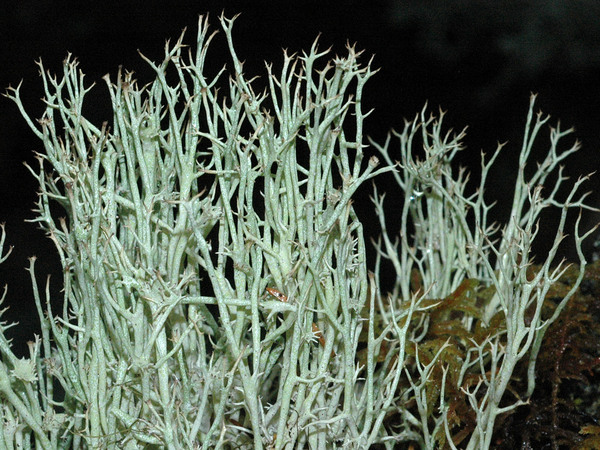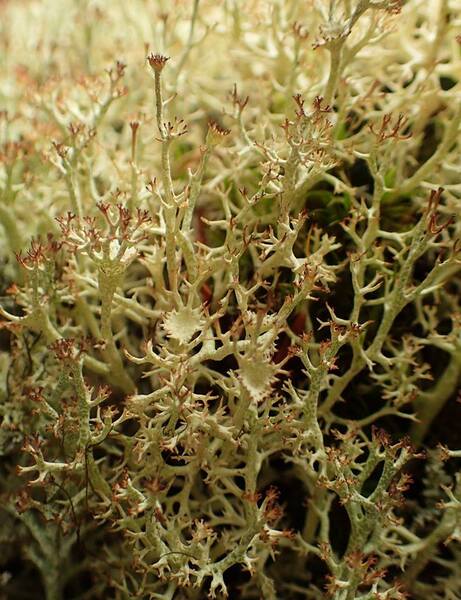Cladonia amaurocraea (Flörke) Schaer.
Lich. Helv. Spicil., 1: 34, 1823. Basionym: Capitularia amaurocraea Flörke in Weber & Mohr - Beitr. Naturk., 2: 334, 1810.
Synonyms:
Distribution: N - Frl, Ven (Nimis 1994, Nascimbene & Caniglia 2003c), TAA (Caniglia & al. 2002, Nascimbene & al. 2005, 2006, 2022, Bilovitz & al. 2014b), Lomb (Rivellini 1994, Rivellini & Valcuvia 1996), Piem (Isocrono & al. 2004), VA (Piervittori & Isocrono 1997, 1999).
Description: Primary thallus ephemeral and rarely seen, of small, crenate to incised, up to 1.5 mm broad and long squamules. Podetia hollow inside, yellowish green to yellowish grey, non-squamulose, to 12(-15) cm tall and up to 1.5(-3) mm thick, not melanotic at base, more or less anisotomic dichotomously branched, often forming large tufts, the tips of branchlets often brownish, pointed or terminating in narrow cups which flare rapidly, the cups perforate or closed, often with thorn-like brownish lateral projections. Axils mostly closed, more rarely slightly perforated; internal surface of podetia striated. Apothecia rare, brown to yellowish brown, convex. Asci 8-spored, clavate, thickened at apex, with a K/I+ blue tholus and a K/I+ strongly blue outer gelatinous sheath, Cladonia-type. Ascospores 1-celled, hyaline, ellipsoid. Pycnidia dark, semi-immersed in the tips of podetia or along the margins of cups; pycnidial jelly colourless. Conidia hyaline, curved, rarely cylindrical. Photobiont chlorococcoid. Spot tests: K-, C-, KC+ yellowish, P-, UV-. Chemistry: usnic, barbatic and 4-0-demethylbarbatic acids.Note: a circumpolar, boreal-subarctic-subalpine lichen found on acid soil and bryophytes in open habitats, mostly in sites with a long snow lie near and above treeline, probably restricted to the Alps in Italy, where it is generally not common.
Growth form: Fruticose
Substrata: soil, terricolous mosses, and plant debris
Photobiont: green algae other than Trentepohlia
Reproductive strategy: mainly sexual
Commonnes-rarity: (info)
Alpine belt: rare
Subalpine belt: rather rare
Oromediterranean belt: absent
Montane belt: absent
Submediterranean belt: absent
Padanian area: absent
Humid submediterranean belt: absent
Humid mediterranean belt: absent
Dry mediterranean belt: absent
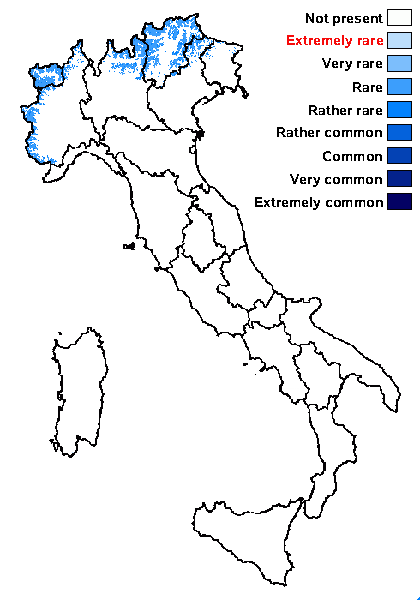
Predictive model
Herbarium samples
Growth form: Fruticose
Substrata: soil, terricolous mosses, and plant debris
Photobiont: green algae other than Trentepohlia
Reproductive strategy: mainly sexual
Commonnes-rarity: (info)
Alpine belt: rare
Subalpine belt: rather rare
Oromediterranean belt: absent
Montane belt: absent
Submediterranean belt: absent
Padanian area: absent
Humid submediterranean belt: absent
Humid mediterranean belt: absent
Dry mediterranean belt: absent

Predictive model
| Herbarium samples |
 Index Fungorum
Index Fungorum
 GBIF
GBIF
